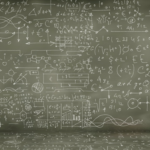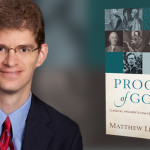What Is the True Understanding of Causality?
by Dr. Dennis Bonnette
Filed under Philosophy

The classical proofs for God’s existence, particularly St. Thomas Aquinas’ Five Ways, employ the notion of causality – both efficient and final. In that context, many misunderstandings arise concerning the true metaphysical meaning of the principle of causality.
This article will assume the validity of the metaphysical first principles of non-contradiction and sufficient reason, which were established as true in my previous Strange Notions article on the first principles – and will not be reargued herein. These principles will be employed as instruments with which to explore the genuine meaning of causality.
No modern philosopher has had more impact on the understanding of causality than David Hume. Hume conceived causality as an habitual association of mental impressions, arising largely through constant conjunction of previous experiences – connected through contiguity or temporal succession.1 Since induction alone could never assure the necessity of such associations, he maintained that the “law of causality” cannot be rationally proven. Influenced by Hume, modern science translates causality to a formula, such as “given event A, event B will necessarily and subsequently follow.” Effectively, this becomes a matter of predictability. Since event B can always be interfered with, strict causality can never be assured.
While Thomist metaphysicians would not accept the idealistic implications of Hume’s epistemology, they would agree that finite causes cannot be guaranteed to produce any given effect for much the same reason.
Still, the metaphysical principle of causality starts from the other end: from the effect – and reasons back to the cause. The universally true metaphysical principle of sufficient reason states that every being must have a sufficient reason for its being or coming-to-be. Logical division tells us that this reason must be found either within the being in question (intrinsically) or not within that being (extrinsically). If a being is not its own sufficient reason, it necessarily follows that something else, called a “cause,” must be its reason.
Thus, an effect is a being whose sufficient reason is not intrinsic. A cause is an extrinsic sufficient reason. The principle of causality states that every effect necessarily requires a cause. The principle of causality is simply a subset of sufficient reason – that part of it that deals with beings that are not their own sufficient reason, and thus, need a cause. From this, it follows that an Uncaused First Cause, namely God, would have no need for a prior cause, since he would be his own sufficient reason for being.
But what if we have something that partially explains itself? In that case, the formula is elucidated by saying that to the extent that a being does not explain itself, it needs to have an extrinsic reason, or cause, to account for whatever it does not explain of itself. For example, while water’s nature may explain why it is wet, it does not explain why it is hot. Thus, its heat, which is extrinsic to its nature, must be explained by some extrinsic agent, such as a hot stove. In sum, adding both intrinsic reasons to extrinsic reasons, the totality of the being in question must be fully explained (whether all such reasons are fully known or not).
Moreover, just as a reason must be sufficient, a cause must be proportionate to its effect. You cannot have something that is totally dependent, and yet, is adequately explained by a cause that accounts for only part of its effect’s existence.
Thanks to David Hume, we are used to thinking of a cause as something that invariably precedes its effect in temporal sequence, just as we expect that parents come before their children. This leads people to think of the causal regresses in St. Thomas’ Five Ways in terms of a series of causes going back in time. But this is entirely wrong.
The meaning of an effect is measured in terms of its being existentially dependent upon its cause. Simply put, you cannot remove an extrinsic sufficient reason (cause) on which something depends, and still expect the effect to continue to be. St. Thomas affirms this principle many times, as when he says “… with the cessation of the cause, the effect also ceases….”2 Or again, “…removing a cause is to remove that of which it is a cause.”3
Since the logic of this principle flows so immediately from that of sufficient reason, one might think that no confusion could arise as to its use, especially in the proofs for God’s existence. Still, in practice, the principle appears often badly understood, despite its critical role in such demonstrations. Thus, we see endless arguments as to whether causal chains can go back in time to infinity, or whether the world must have had a temporal beginning – all of which are entirely irrelevant to the actual proofs, at least those of Thomas Aquinas.
Thomist metaphysicians usually mark this immediate dependence of effect upon cause by saying that the cause must be simultaneous with its effect. Still, many people remain confused about the proper application of this principle to practical examples.
Consider the following scenario: Someone uses dynamite to remove a tree stump, taking care to leave the scene before the explosion. How does “simultaneity” work here? How does taking away the cause always take away the effect?
First, the dynamiter must light the match to light the fuse. He rubs the match over sandpaper to cause the heat needed to start the reaction between the oxidizing and reducing agents in the head of the match. Sometimes the match does not light because the friction fails to generate enough heat to start the reaction. When the match stops running over the sandpaper (cause), the heat stops (effect). So he tries again. This time the heat causes the chemicals in the head of the match to initiate their mutual causation on each other, resulting in an exothermic reaction of fire. But sometimes the oxidizing and reducing agents are consumed before the carbon in the wood of the match catches fire. The match fizzles out. When the mutual agents were exhausted (cause), the incipient fire ceased (effect).
But, let us assume that the match head fire reaches the kindling point of the wood in the match and the match ignites. What then keeps it burning, since the match head is now exhausted? It is the mutual agency of the carbon in the wood with the oxygen in the air, causing the burning of the match – a process that continues only as long as there is sufficient wood and oxygen to causally interact. Then, the match is put to the end of the fuse. If it ignites, the black powder in the fuse burns with the oxygen in the air as long as there is powder to burn and no longer. If the fuse is exhausted before the dynamite is ignited, it simply goes out and nothing happens. When the cause ceases causing, the effect ceases.
Finally, the dynamite goes off, creating a massive explosion that removes the tree stump. But why does not the explosive force go to infinity? How does the dynamiter know how much dynamite to use? He can in fact calculate the amount of explosive to use in order to cause the desired effect – knowing that for every gram molecular weight of the explosive agents he will almost instantly produce 22.4 liters of gasses, thus creating the powerful, but predictably limited, desired effect. When the cause ceases causing, the effect ceases.
Yet, was not the person who lit the dynamite the true cause of the later explosion? Yes, but in a different order of causation than the physical one that I have described in detail. He is the cause as a moral agent, using intelligence to oversee the entire causal process. His physical causation ended when he put the lighted match to the fuse. But his moral responsibility for the final explosion remains after the explosion itself. He is not physically able to remove the stump with his own muscles, but he can intelligently use the physical forces of nature to do so.
In every moment of this detailed description, the universal causal principle was upheld. Every time the physical cause ceased causing its direct effect ceased being effected.
Proper understanding of exactly what a cause is actually causing proves no exceptions to the causal rule. But I use this complex physical “case study” to show how easily one could make the mistake of thinking that “the cause is gone, but the effect remains.” At every moment, careful understanding will show that present effects are explained solely by present, not past, causes. And yes, the physical remains of the blast are sustained, not by the earlier causes of coming-to-be, but by the physical structure of the resulting wood chips, the ground holding them up, while gravity holds them down, and the rest of operative physical and metaphysical causes presently effecting their continued existence in the manner in which they are.
The universal validity of the principle of simultaneity in causation is derived from the principle of sufficient reason, and so it applies to all being, both material and spiritual. Still, I have offered careful explanation of a physical scenario, since most misunderstandings about causation arise from physical examples in which it appears, superficially, that the cause precedes its effect in time – a mistake apparently made even by Hume.
Still, does not Einstein’s special theory of relativity prove that objective simultaneity is illusory? As philosopher Dr. Edward Feser points out, causation that concerns the same event in the same place – such as removing that tree stump, renders irrelevant an objection based on judgments made by different observers in diverse spatial locations.4
While Thomists usually insist upon “simultaneity” between cause and effect, a more exact expression of the causality principle is that the effect is immediately dependent upon its proper cause, which is a cause directly ordered to a specific effect. “Simultaneity” is a concept properly predicated of things in the physical world, since they exist in time.
This principle applies, not only to the physical world, but to the spiritual world as well, since its universal and transcendental character arises from its nature as a law of existence itself – just like the other metaphysical first principles. Clearly, things that no longer exist or have no immediate impact on the effect, cannot remedy its existential dependency. Only a true and immediately acting proper cause can.
For the above reasons, every effect requires an immediate, proportionate, and proper cause. Such causation is the focus of St. Thomas’ Five Ways.
Related Posts
Notes:
- David Hume, A Treatise of Human Nature ( London: Penguin Books, 1969). ↩
- Summa Theologiae I, q. 96, a. 3, ob.3. ↩
- Summa Contra Gentiles I, 13. ↩
- Edward Feser, Five Proofs of the Existence of God (Ignatius Press, 2017) 63. ↩
Note: Our goal is to cultivate serious and respectful dialogue. While it's OK to disagree—even encouraged!—any snarky, offensive, or off-topic comments will be deleted. Before commenting please read the Commenting Rules and Tips. If you're having trouble commenting, read the Commenting Instructions.












